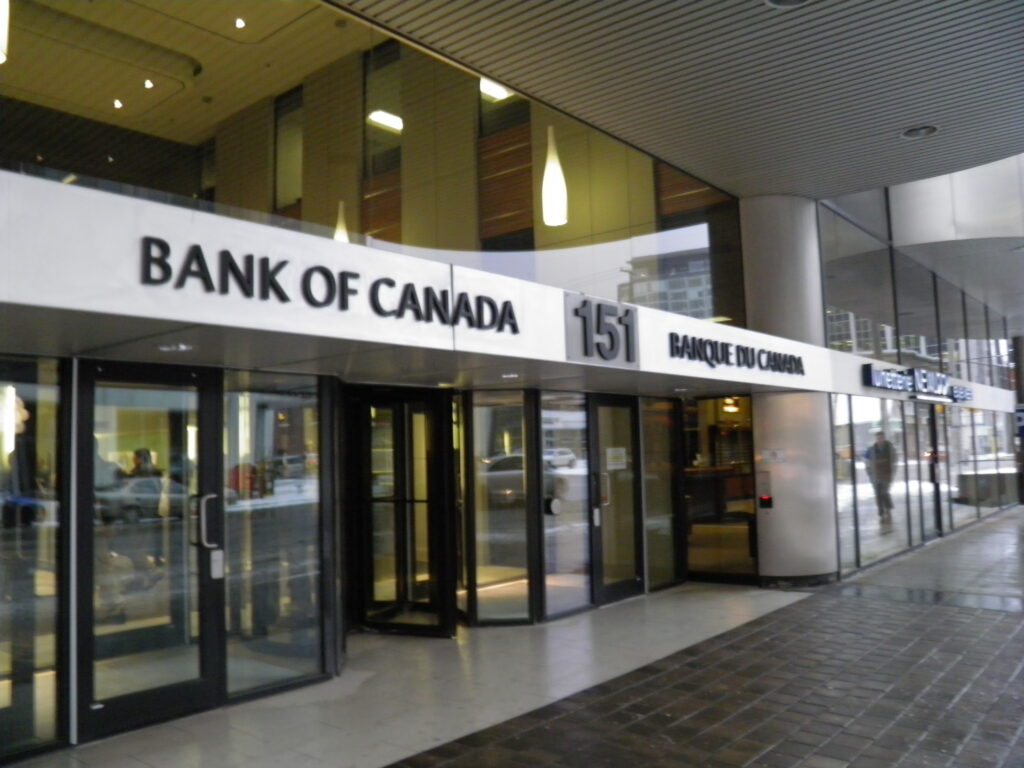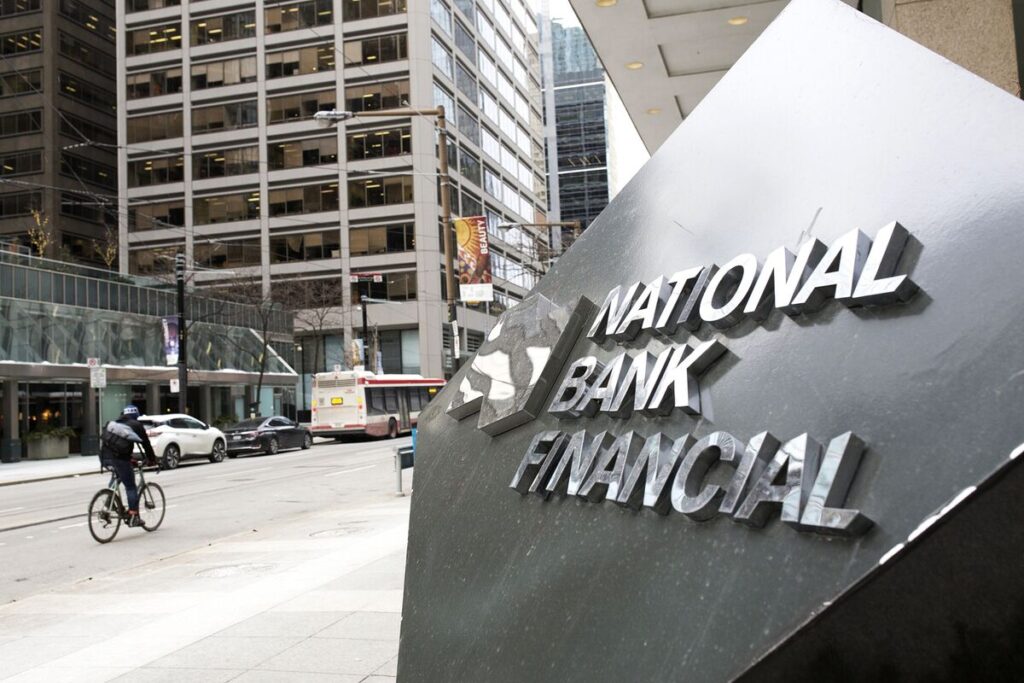In 1792, a group of Montreal businessmen made an unsuccessful attempt to establish a bank in Canada. But in 1817, nine Montreal merchants nevertheless founded the Montreal Bank, known today as the oldest existing Canadian bank. By 1867, there were already 35 banks in British North America.
Initially, banks were registered in the province as legal entities. With the creation of the Confederation in 1867, the new federal government was granted exclusive jurisdiction over all matters related to money and banking. The final version of the Banking Act was passed in 1871. A Banking Law passed in 1980 regulates commercial bank activities and allows two types of banks to operate.
The Bank of Canada controls the clearing system through licensed commercial banks and other financial institutions. The Minister of Finance keeps the banks under regular control.
11 financial institutions that operated before the law was revised in 1980 are known as List A banks. List B banks are either international branches or Canadian-owned banks where one of the owners poses more than 10% of the issued and held outstanding shares. List A shares cannot be held by a limited number of persons.
Each bank has a Chief Executive Officer who reports directly to the Board of Directors. All List A banks are bought and sold on major stock exchanges.
Banks allow opening three main types of deposit accounts: time deposits, savings, and current accounts. Deposits are placed with licensed commercial banks in Canadian dollars. Deposits of up to $60,000 per depositor are insured in each bank by the Canadian Federal Deposit Insurance Corporation.

Significant revenues come from international operations. Canadian banks are active in the financial markets and are represented by 300 branches in 30 foreign countries. In 1986, assets in foreign currency accounted for more than 45% of their total.
Interest rates depend on market factors affecting the money supply and demand. These rates are significantly influenced by the federal government, which through its agent, the Bank of Canada, conducts monetary policy taking into account international conditions and domestic problems.
Banking in Canada is highly regulated
The Banking Law defines the Principles of Banking Regulation and defines the Banking Law. Other federal laws that directly or indirectly affect institutions are laws about:
- the bill of exchange;
- the settlement association;
- corporations for insurance of deposits;
- labor;
- pensions;
- mortgage and housing corporations;
- production;
- trading corporations;
- income taxation.
The Bank of Canada, created in 1945 as the central organ, also has a great influence on the operations of the country’s commercial banks. Under the Banking Act of 1980, an annual report must be submitted to the shareholders. Including:
- Consolidated claim statement and obligations specified in the List K form.
- Consolidated income statement specified in the List L form.
- A summary report on funds for unexpected expenses specified in the List M form.
- Consolidated statement of changes in equity specified in the List N.
As a result of the changes introduced by the Banking Act 1980, the financial statements of Canadian banks have been aligned with generally accepted accounting principles in the main areas, except accounting for loan losses and accounting for the provision for contingencies.
Relationship with the Bank of Canada
The Central Bank of Canada does not accept deposits from individuals and does not compete with licensed commercial banks for commercial banking. However, by the Banking Act provisions, the Bank of Canada may establish the total amount of cash reserves that can be used by commercial banks on a consolidated basis.
Each commercial entity must deposit with the Bank of Canada a certain average amount of cash reserves in the form of holdings in the internal notes. The Bank of Canada has the exclusive right to issue banknotes for internal circulation in Canada.

Before the adoption of the Banking Law, there was a requirement: 4% reserve for deposits with notice of withdrawal and 12% reserve for on-demand deposits. With the adoption of the Banking Act in 1980, new rates were set: 3% and 10%, respectively, as well as only 2% of the mandatory reserve for the first $500 million for notification deposits.
The decrease in the rates of required reserves took place in stages over three and a half years. Cash on hand has been deducted from reserve requirements. According to preliminary estimates, these changes should have reduced the reserve contributions by about one-fiftieth.
The reserve requirements for non-cash deposits (without collectible deposits) for more than one year were canceled, as well as for some other deposits, including RRSP, RHOSP:
- deposits from other banks;
- deposits of non-banking organizations — members of the IAS (Association of Canadian Bankers);
- deposits in Canadian currency of non-residents.
Reserve requirements were extended to foreign subsidiaries that are wholly foreign property, as well as deposits of factoring and leasing companies, which are wholly or partially owned by them.
The Bank of Canada may provide loans to commercial financial bodies secured by certain types of securities for a period not exceeding 6 months. Loans can be released to the government or provinces under certain conditions and for a limited period. The discount rate is the minimum rate at which the bank is willing to provide loans or borrowings.
The bank may also require licensed commercial banks to maintain a second reserve, the amount of which may be adjusted within certain limits. The second provision applies to excess cash reserves to equity capital, treasury bills, and overnight loans to dealer-investors.
Other Canadian government credit and financial institutions
The Agricultural Credit Corporation was founded in 1959 to provide long-term mortgage loans to farmers.
The Canadian Mortgage and Housing Corporation (formerly Central Mortgage and Housing Corporation) was incorporated as a joint-stock company in 1945 and have two functions: insuring mortgage loans provided by some lenders and providing direct mortgages.
The Federal Business Development Bank (FBDB) was founded in 1975 to provide financial and management consulting services available to small-returns and medium- returns enterprises.
A bank acts as the successor to the Industrial Development Bank, which was founded in 1944 as a subsidiary of the head corporation.
International activities of Canadian banks
The growing importance of the international activities of Canadian banks and activities of the Banking Supervision Committee for International Settlements is reflected in the Banking Act 1980 in three modes.
First, banks must present consolidated financial statements (including balances) of their branches. The previous legislation provided for the consolidation of the balance sheet of only those branches that were wholly owned by them.

Secondly, the bank will not be controlled by Canadian or foreign companies unless receives a resolution from the Board of Directors of that company giving the Inspector General of Banks the right to access company books and records.
The Office of the Inspector General was established in Canada in 1924 under an amendment to the Banking Act following the Home Bank bankruptcy in 1923.
Third, concerning office secrecy requirements, the inspector may, as a special exception, provide information on the state of affairs at the Bank to senior officials responsible for supervising the activities of banking outside Canadian jurisdiction.
An inspector’s non-application of secrecy requirements may be based on the fact that:
- the exchange of such information is in the interests of Canada;
- officials to whom this information is provided are required by law to maintain secrecy concerning the information so provided.
Foreign banks in Canada
Under the Banking Act 1980, any international bank wishing to open branches in Canada is subject to the following criteria:
- A foreign bank must have an international status.
- Assets, experience, and income must be sufficient to support the operation of the affiliates in Canada.
- Shares, as a rule, must be in the hands of a wide range of shareholders.
- The bank must be properly supervised and have good Due Diligence.
- The bank must demonstrate the ability to contribute to the development of competitive banking in Canada, as well as the existence of the principle of reciprocity in this jurisdiction.
- A bank must be ready to provide a letter of guarantee (letter of comfort) confirming its readiness to be responsible for the activities of the branch.
- There is a limit of 8% of all NATs on the total assets of foreign bank branches operating in the Dominion.








